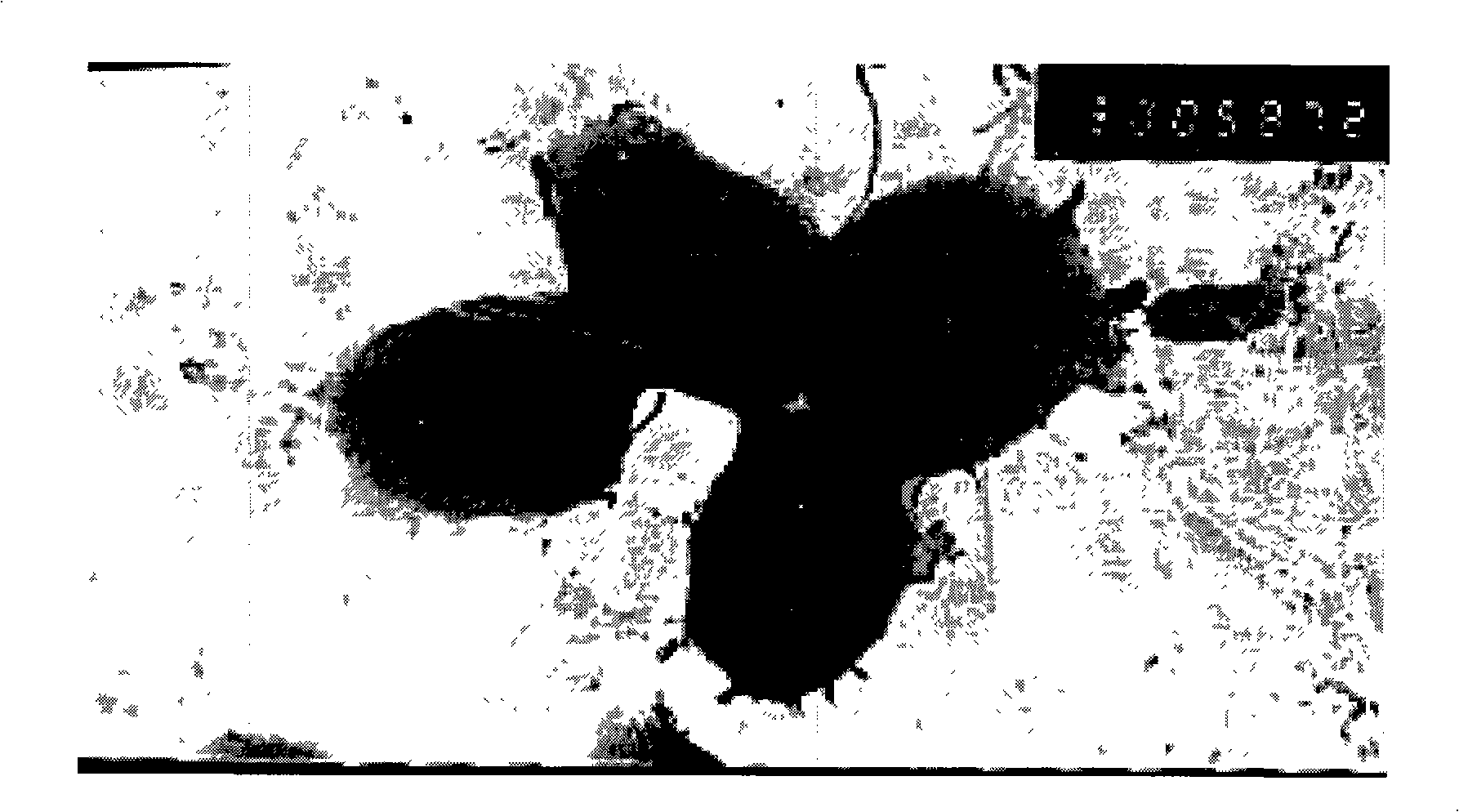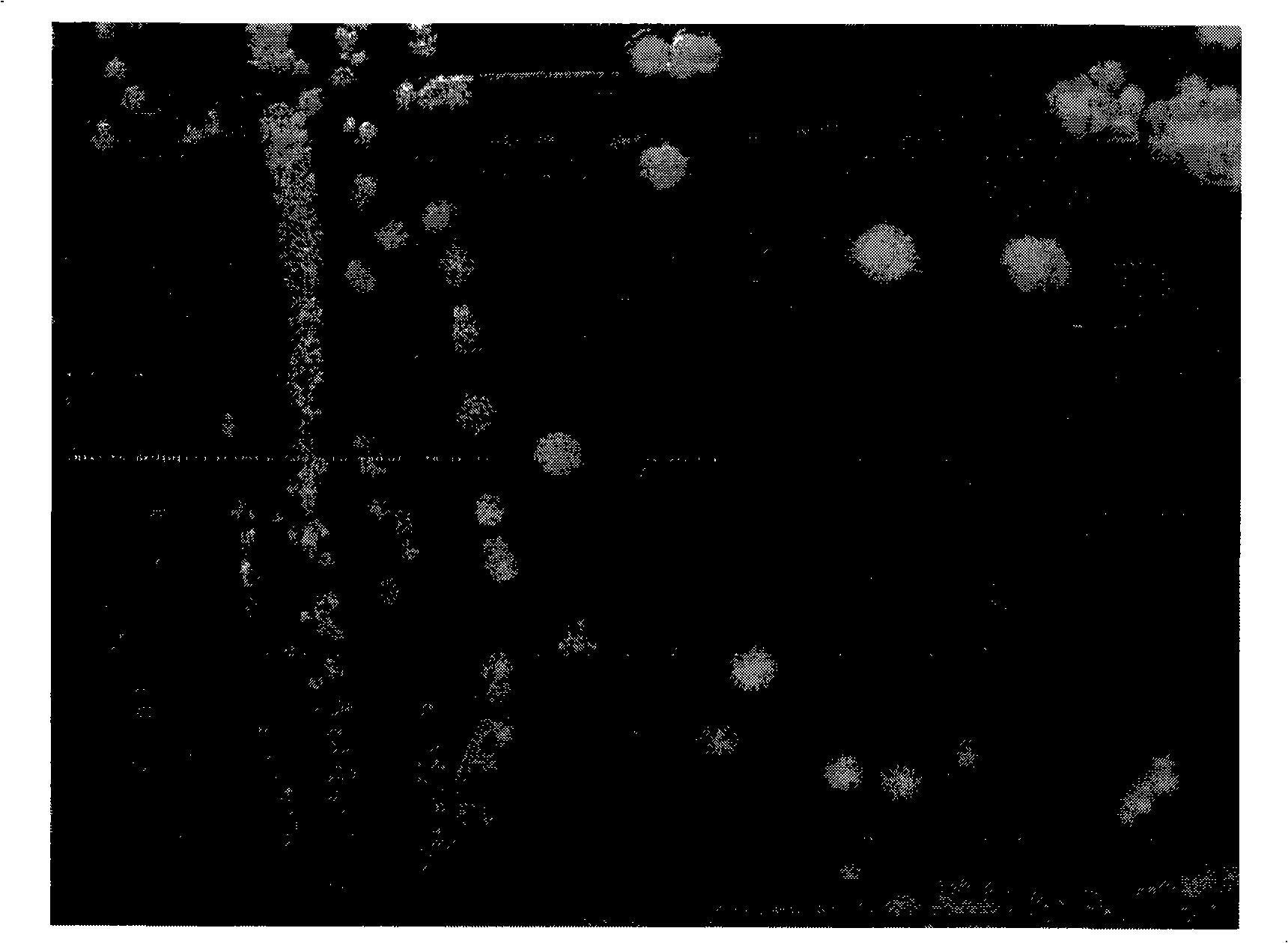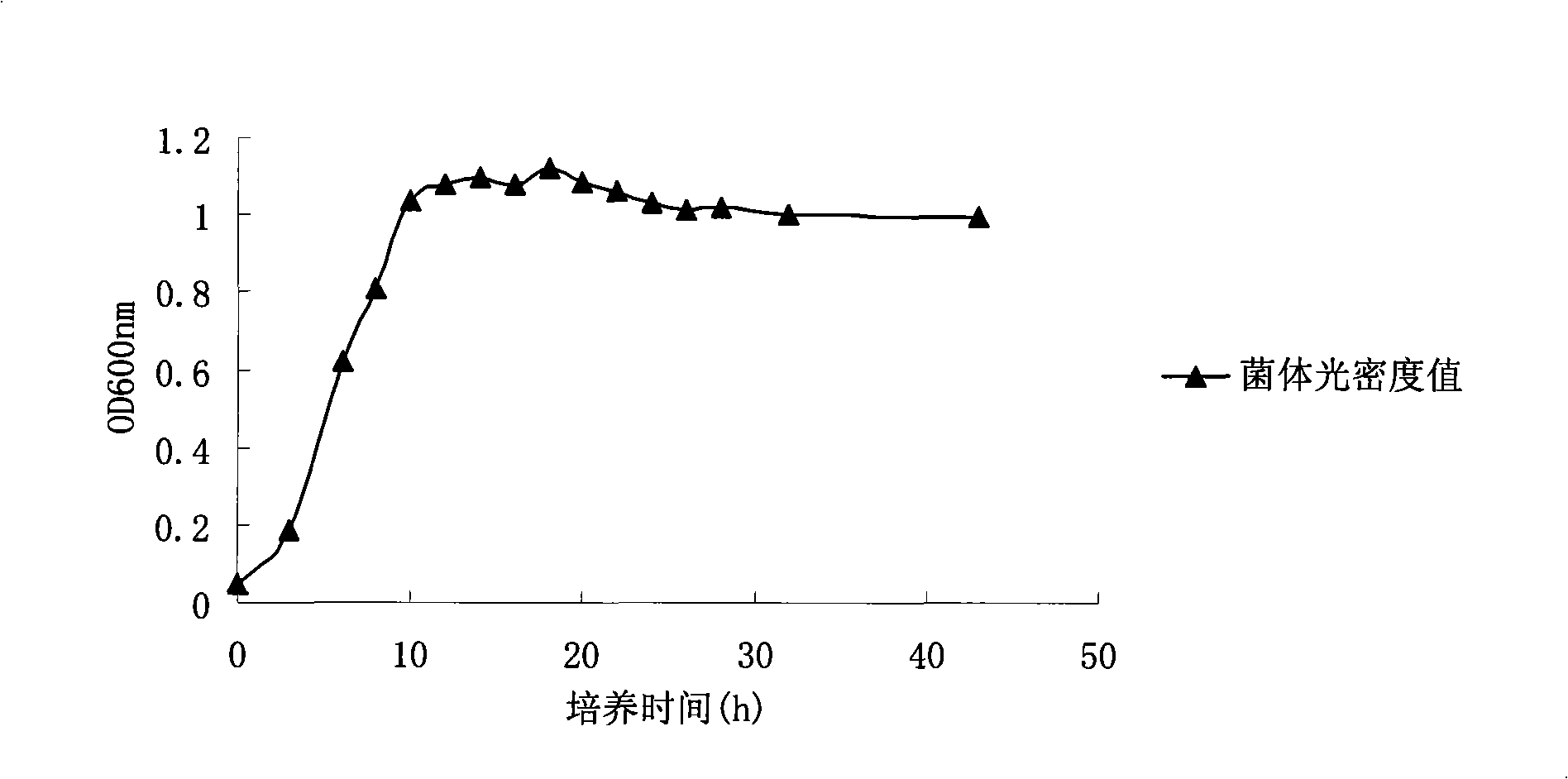Heterotrophic nitrification aerobic denitrifying bacteria, culturing method thereof and uses
An aerobic denitrification and heterotrophic nitrification technology is applied in the field of efficient heterotrophic nitrification aerobic denitrification bacteria and their cultivation, and can solve the problems of increased energy consumption, large energy consumption, oxygen consumption and the like
- Summary
- Abstract
- Description
- Claims
- Application Information
AI Technical Summary
Problems solved by technology
Method used
Image
Examples
Embodiment 1
[0098] Embodiment 1: the cultivation of bacterial strain of the present invention
[0099] (1) Beef extract medium and organic carbon source denitrification medium, sterilized at 121°C for 20 minutes.
[0100] (2) The strain Pseudomonas putida DN1.2 was inoculated on the slope of sterilized beef extract, activated and cultivated at 35°C for 10-16 hours for later use.
[0101] (3) Inoculate the activated strains in beef extract liquid medium or organic carbon source denitrification liquid medium respectively, fill 50mL medium in a 250mL Erlenmeyer flask, and culture at 35°C, 170-200rpm, for 10-16h with shaking. The growth curve of DN1.2 in the beef extract medium is attached image 3 . It can be seen from the figure that DN1.2 grows very well in the beef extract medium, and the lag period is very short. It is in the logarithmic growth phase within 3 to 10 hours, and it can reach the stable phase after 10 hours.
[0102] (4) 4000rpm, 10min centrifugation to harvest the bacter...
Embodiment 2
[0103] Embodiment 2: Denitrification of bacterial strains of the present invention under inorganic carbon source conditions
[0104] Autotrophic nitrification medium (g / L): (NH 4 ) 2 SO 4 2,K 2 HPO 4 1. MgSO 4 ·7H 2 O 0.5, FeSO 4 ·7H 2 O0.4, NaCl2. After bottling, add CaCO in a ratio of 0.5% by mass 3 , and finally adjust the pH to 7.2 with 1% NaOH solution, and sterilize at 121°C for 20 minutes.
[0105] Use autotrophic nitrification medium, inoculate 10% bacterial suspension (cultivation method sees embodiment 1), control replaces with the same volume of sterilized water, 30 ℃, 170rpm vibration culture 10 hours, regular sampling measures ammonia nitrogen, nitrate nitrogen, Changes in the concentration of nitrite nitrogen. The experimental results are shown in Table 2. It can be seen from Table 2 that in the inorganic carbon source denitrification medium with an initial ammonia nitrogen concentration of 56.6 mg / L, after 10 hours of shaking culture, DN1.2 reduced...
Embodiment 3
[0108] Embodiment 3: Denitrification of bacterial strains of the present invention under organic carbon source conditions
[0109] Organic carbon source denitrification medium (g / L): KH 2 PO 4 0.7, MgSO 4 ·7H 2 O 0.5, CaCl 2 2H 2 O 0.5, (NH 4 ) 2 SO 4 0.5, glucose 1.0-4.0, NaOH to adjust the pH to 7.2-7.4, and sterilize at 121°C for 20 minutes.
[0110] (1) Removal of ammonia nitrogen under the condition of organic carbon source
[0111] Use organic carbon source denitrification medium (prepared COD Cr About 1000mg / L, about 80mg / L of ammonia nitrogen), inoculate 6.7% of the bacterial suspension (see Example 1 for the culture method), replace with the same volume of sterilized water as the control, 30°C, 170rpm shaking culture for 12 hours, regular sampling and determination Changes in the concentrations of ammonia nitrogen, nitrate nitrogen, and nitrite nitrogen. The results are shown in Table 3. It can be seen from Table 3 that DN1.2 can also remove ammonia nitr...
PUM
| Property | Measurement | Unit |
|---|---|---|
| diameter | aaaaa | aaaaa |
Abstract
Description
Claims
Application Information
 Login to View More
Login to View More - R&D
- Intellectual Property
- Life Sciences
- Materials
- Tech Scout
- Unparalleled Data Quality
- Higher Quality Content
- 60% Fewer Hallucinations
Browse by: Latest US Patents, China's latest patents, Technical Efficacy Thesaurus, Application Domain, Technology Topic, Popular Technical Reports.
© 2025 PatSnap. All rights reserved.Legal|Privacy policy|Modern Slavery Act Transparency Statement|Sitemap|About US| Contact US: help@patsnap.com



